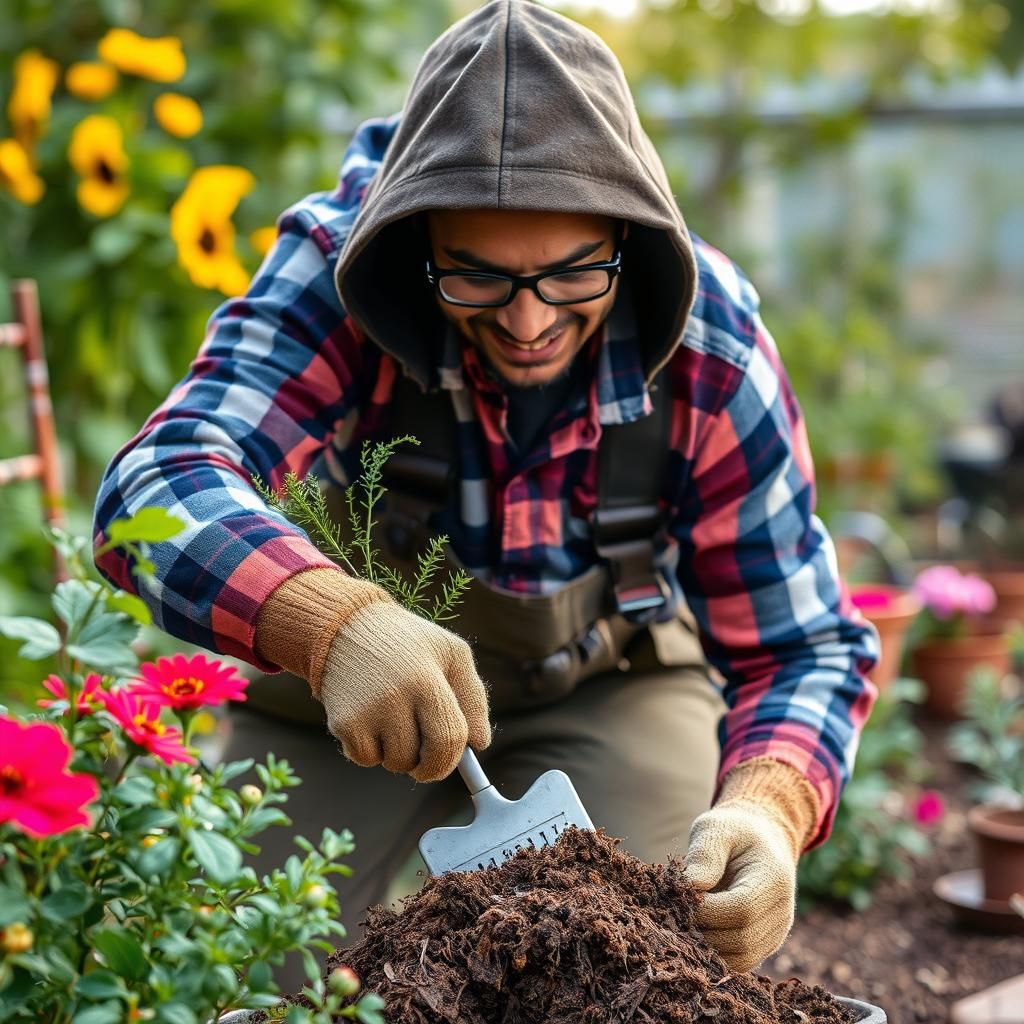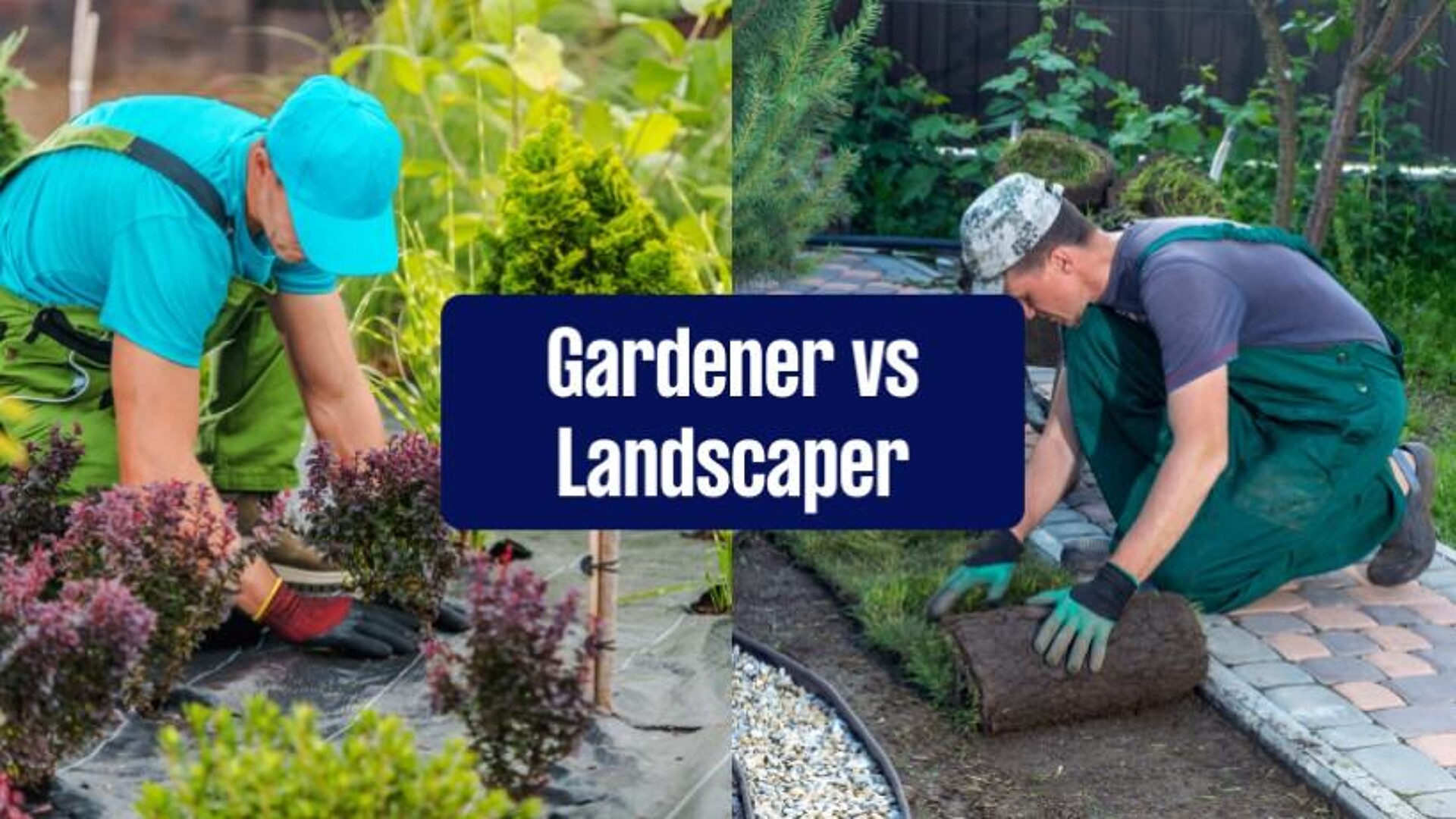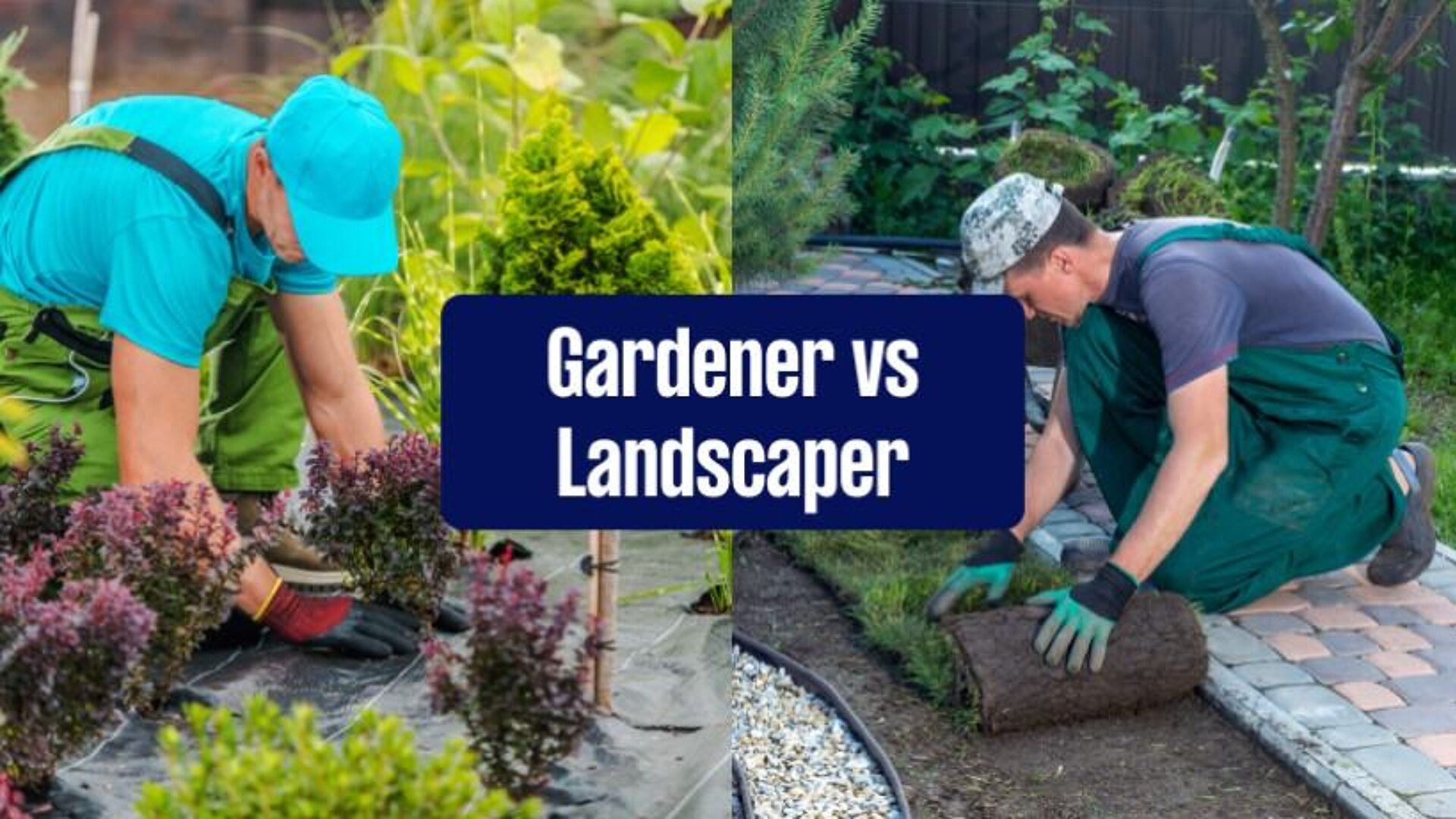What is the Difference Between a Landscaper and a Gardener? Understanding Key Roles in Landscaping and Gardening

The terms landscaper and gardener are often used interchangeably, yet they represent distinct professions within the realm of outdoor design and maintenance. Understanding the key differences between these two roles is essential for homeowners and property managers seeking to enhance their outdoor spaces. While landscapers focus on the overall design, layout, and hardscape elements, gardeners are primarily concerned with the cultivation and care of plants. This article delves into the unique responsibilities and skills associated with each profession, providing clarity on how they contribute to creating and maintaining beautiful landscapes.
What Is the Difference Between a Landscaper and a Gardener?
A landscaper and a gardener both play important roles in maintaining and enhancing outdoor spaces, but their functions and areas of expertise differ significantly. A landscaper typically focuses on the larger design and layout of outdoor areas, which may include hardscaping elements such as patios, walkways, and retaining walls, as well as the selection and placement of trees, shrubs, and other plants designed to create an aesthetically pleasing environment. In contrast, a gardener is more involved in the day-to-day upkeep and cultivation of plants, flowers, and gardens. Their duties often include planting, pruning, weeding, and ensuring that the plants are healthy and thriving. Overall, while both professions share a passion for plants and outdoor aesthetics, they approach their work with different scopes and skills.
Scope of Work
The scope of work for a landscaper generally encompasses both the design and installation of outdoor spaces, which may involve working with architects and engineers. On the other hand, a gardener is primarily focused on maintaining existing gardens and landscapes. This maintenance includes activities like watering, fertilizing, and pest control, emphasizing nurturing the plants and ensuring their vibrant health.
Design vs. Maintenance
One of the key differences lies in the design vs. maintenance aspect of each profession. Landscapers are often tasked with creating blueprints or visual plans that involve comprehensive landscaping, incorporating elements like terrain grading and irrigation systems. In contrast, gardeners do not typically engage in design work; instead, they execute the care and management of gardens, ensuring that designers' visions are realized and sustained over time.
Education and Skills
The education and skills required for each profession can vary significantly. Landscapers may need formal training in landscape architecture or design, which equips them with knowledge of aesthetics, materials, and construction techniques. Conversely, gardeners often benefit from hands-on experience and practical knowledge about plant care and horticulture, including soil science and pest management.
Types of Projects
The types of projects that landscapers and gardeners undertake can also differ widely. Landscapers often work on large-scale projects such as new housing developments, parks, or institutional landscapes, which require comprehensive planning and implementation. Gardeners, however, typically focus on smaller-scale projects, like residential gardens, community gardens, or urban green spaces, fostering the growth and health of plants in these areas.
Tools and Equipment
Finally, the tools and equipment used by landscapers and gardeners often reflect their distinct roles. Landscapers commonly utilize heavy machinery and equipment, such as bulldozers and augers, for construction and installation tasks. In contrast, gardeners tend to work with more manual tools, such as pruners, trowels, and hoes, which are essential for nurturing and tending to plants in a more hands-on manner.
| Aspect | Landscaper | Gardener |
|---|---|---|
| Scope of Work | Design and installation | Maintenance and care |
| Focus | Design elements | Plant health |
| Education | Professional training | Practical experience |
| Project Types | Large-scale landscapes | Residential gardens |
| Tools Used | Heavy machinery | Manual tools |
Are landscapers and gardeners the same?

While landscapers and gardeners often work in similar environments and both contribute to the aesthetics and functionality of outdoor spaces, they are fundamentally different in focus and expertise. Landscapers typically engage in larger-scale projects involving design, construction, and installation of various outdoor elements, while gardeners are more concerned with the cultivation and maintenance of plants and gardens.
Differences in Responsibilities
Landscapers and gardeners have distinct responsibilities that cater to differing aspects of outdoor maintenance and design. Landscapers focus on creating structures and aesthetics for a landscape. This can include features such as patios, retaining walls, and pathways. On the other hand, gardeners center their efforts on the growth and care of plants and flowers. Their duties often involve various aspects of plant care such as:
- Planting and transplanting
- Weeding and mulching
- Watering and fertilizing
Skill Sets and Expertise
The skill sets required for landscapers and gardeners are often different, though there can be some overlap. Landscapers typically need to have a strong understanding of design principles, construction methods, and various hardscaping materials. They may also require knowledge in areas such as drainage and outdoor lighting. Conversely, gardeners usually have extensive knowledge about botany, soil health, and plant care techniques. Their expertise enhances the flourishing of plant life and the overall health of a garden. Key skills include:
See also:
- Plant identification and selection
- Pest and disease management
- Soil analysis and amendments
Project Scope and Scale
The scope and scale of projects undertaken by landscapers and gardeners can vary significantly. Landscapers often tackle larger, more complex projects that require planning and execution over an extended period. This may include the redesign of entire yards or installation of significant features such as water fountains or hardscaping elements. In contrast, gardeners typically work on smaller-scale projects, focusing on specific areas of maintenance and improvement. Their work is often ongoing and may include:
- Seasonal planting and maintenance
- Creating flower beds or vegetable gardens
- Prioritizing the aesthetic appeal of specific plant arrangements
Tools and Equipment Used
The tools and equipment used by landscapers and gardeners reflect their distinct roles. Landscapers often require heavy machinery and tools designed for construction, such as:
- Excavators and backhoes
- Concrete mixers and pavers
- Power tools for cutting and shaping materials
Conversely, gardeners typically use smaller, manual tools that allow for more delicate tasks, including:
- Hand tools like trowels and pruners
- Garden hoses and drip irrigation systems
- Soil testing kits and fertilizers
Client Interaction and Design Consultation
The nature of client interaction and the design consultation process varies between landscapers and gardeners. Landscapers are often involved in the initial stages of a project, working closely with clients to develop design plans that align with their vision and preferences. They may present concepts and visual diagrams before implementation. In contrast, gardeners might have less direct involvement with design but engage with clients primarily in the ongoing care and maintenance of their gardens, discussing:
- Plant choices that align with personal tastes
- Maintenance tips for sustaining garden health
- Seasonal care practices to enhance growth
What do most gardeners charge per hour?

Most gardeners charge varying rates depending on several factors, including location, experience, type of gardening services provided, and the complexity of the task. On average, gardeners in the United States can charge anywhere from $25 to $60 per hour. In metropolitan areas with a higher cost of living, rates can escalate, reaching upwards of $100 per hour for specialized services or experienced professionals. In contrast, rural areas may see lower hourly rates.
Other elements that influence hourly charges include the specific gardening tasks, the size of the garden, and whether a gardener is working independently or through a landscaping company, which may add additional overhead costs.
Factors Influencing Gardener Pricing
Pricing for gardeners can fluctuate based on several key factors. The most notable are:
- Location: Urban areas typically charge more than rural regions.
- Experience: More experienced gardeners command higher rates due to their advanced skills.
- Services Offered: Complex tasks such as landscaping or garden design may incur additional charges.
Types of Gardening Services
Different gardening services can also lead to varying charges. Common types include:
- Lawn care: Regular maintenance like mowing usually costs less.
- Landscaping: Significant projects, including planting and building features, can be more expensive.
- Specialized services: Pest control or organic gardening may require specific expertise, impacting the rate.
Experience Level of the Gardener
The experience level of a gardener plays a significant role in how much they charge:
- New gardeners: Often charge lower rates as they build their portfolio.
- Intermediate gardeners: Typically have a fair amount of experience and charge moderate rates.
- Expert gardeners: Highly skilled professionals who can demand premium pricing due to their expertise.
Booking and Scheduling
How gardeners book and schedule their services can affect their hourly rates:
See also:
- Same-day services: Often have a higher fee due to the short notice.
- Regular contracts: May benefit from discounted hourly rates if booked consistently.
- Seasonal demand: Rates can increase during peak seasons, particularly in spring and summer.
Geographical Variations in Pricing
Gardener pricing can vary significantly across different regions. Consider the following:
- Urban centers: Higher costs of living may lead to increased gardener rates.
- Suburban areas: Often find a balance between urban and rural pricing.
- Rural communities: Typically have lower rates due to less competition and lower expenses.
Do I need a landscaper or a gardener?

Determining whether you need a landscaper or a gardener depends on your specific needs and goals for your outdoor space. Both professionals have distinct roles, making it crucial to understand the differences between them:
Understanding the Roles
A landscaper typically focuses on design and construction, while a gardener is more concerned with the maintenance of plants and gardens. Here’s a closer look at each role:
- Landscapers: They plan and design outdoor spaces, often incorporating hardscaping elements like patios, walkways, and retaining walls.
- Gardeners: They devote their time to the care of existing plants, ensuring their health through proper watering, pruning, and pest control.
- Overlap: Some landscapers offer gardening services, and vice versa, but their main functions are generally distinct.
When to Hire a Landscaper
If your goal is to create a new outdoor space or significantly renovate your garden, hiring a landscaper may be the best choice. Consider the following factors:
- Design Needs: If you want a customized layout with unique features, a landscaper can help bring your vision to life.
- Hardscaping Elements: For projects that include pathways, walls, or patios, a landscaper is essential as they have the skills needed for construction.
- Professional Planning: Landscapers can produce detailed plans that account for drainage, sunlight, and soil types to ensure a successful project.
When to Hire a Gardener
On the other hand, if your focus is on plant care and maintenance, a gardener would be the right fit. Here are some scenarios where hiring a gardener is beneficial:
- Ongoing Maintenance: If you have an established garden that requires regular upkeep, a gardener can keep it thriving.
- Plant Health: For issues like pests, diseases, or soil problems, a gardener has the expertise to address these concerns effectively.
- Seasonal Changes: Gardeners can help with seasonal planting, preparation, and management, ensuring your garden is vibrant year-round.
Budget Considerations
Your budget will play a crucial role in determining whether you opt for a landscaper or a gardener. Consider these financial aspects:
- Cost of Services: Landscapers generally charge more due to the complexity of their work and the use of machinery.
- Project Scope: Larger landscaping projects may require significant investment, while ongoing gardening services can be more budget-friendly.
- Long-term vs Short-term: While an initial investment in landscaping can yield lasting benefits, hiring a gardener may be a more manageable expense over time.
Combining Both Services
In many cases, homeowners may find that using both a landscaper and a gardener is the most effective solution. Consider the following benefits:
- Holistic Approach: A well-designed landscape complemented by regular maintenance can create a stunning and sustainable outdoor environment.
- Expertise: Each professional brings unique skills to the table, ensuring both aesthetics and health of your garden are managed.
- Time Efficiency: With both services, you can focus on enjoying your outdoor space rather than managing its upkeep.
Questions from Our Readers
What is the primary role of a landscaper?
Landscapers are professionals who design and create outdoor spaces, focusing on aesthetics and functionality. They often work on larger projects such as parks, gardens, and commercial properties, incorporating various elements like hardscaping, plants, and water features to enhance the landscape.
What does a gardener primarily do?
Gardeners are typically responsible for maintaining the health and appearance of plants and gardens. Their tasks include planting, pruning, and weeding, as well as ensuring that the garden is well-nourished and aesthetically pleasing throughout the growing season.
Can landscapers also perform gardening tasks?
Yes, landscapers may perform some gardening tasks, especially during the installation phase of a project. However, their primary focus is on design and structural elements, while long-term upkeep is usually left to gardeners or the property owner.
See also:
Do gardeners require specific training or certification?
While not always mandatory, gardening can benefit from specialized training or certification, especially for advanced skills like landscape design or pest management. Education in horticulture can enhance their understanding of plant care and soil health, making them more effective in their roles.

If you want to read more articles like What is the Difference Between a Landscaper and a Gardener? Understanding Key Roles in Landscaping and Gardening, we recommend you check out our Gardeners category.
Leave a Reply
Related Articles